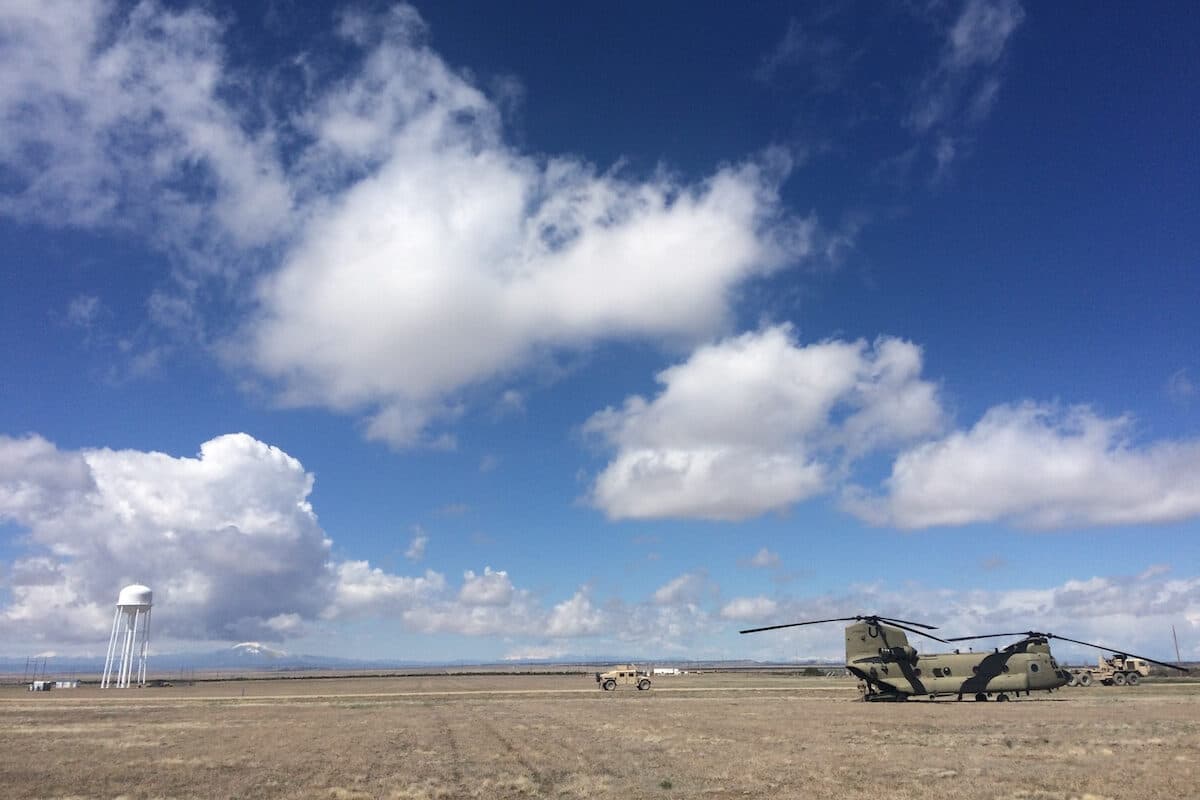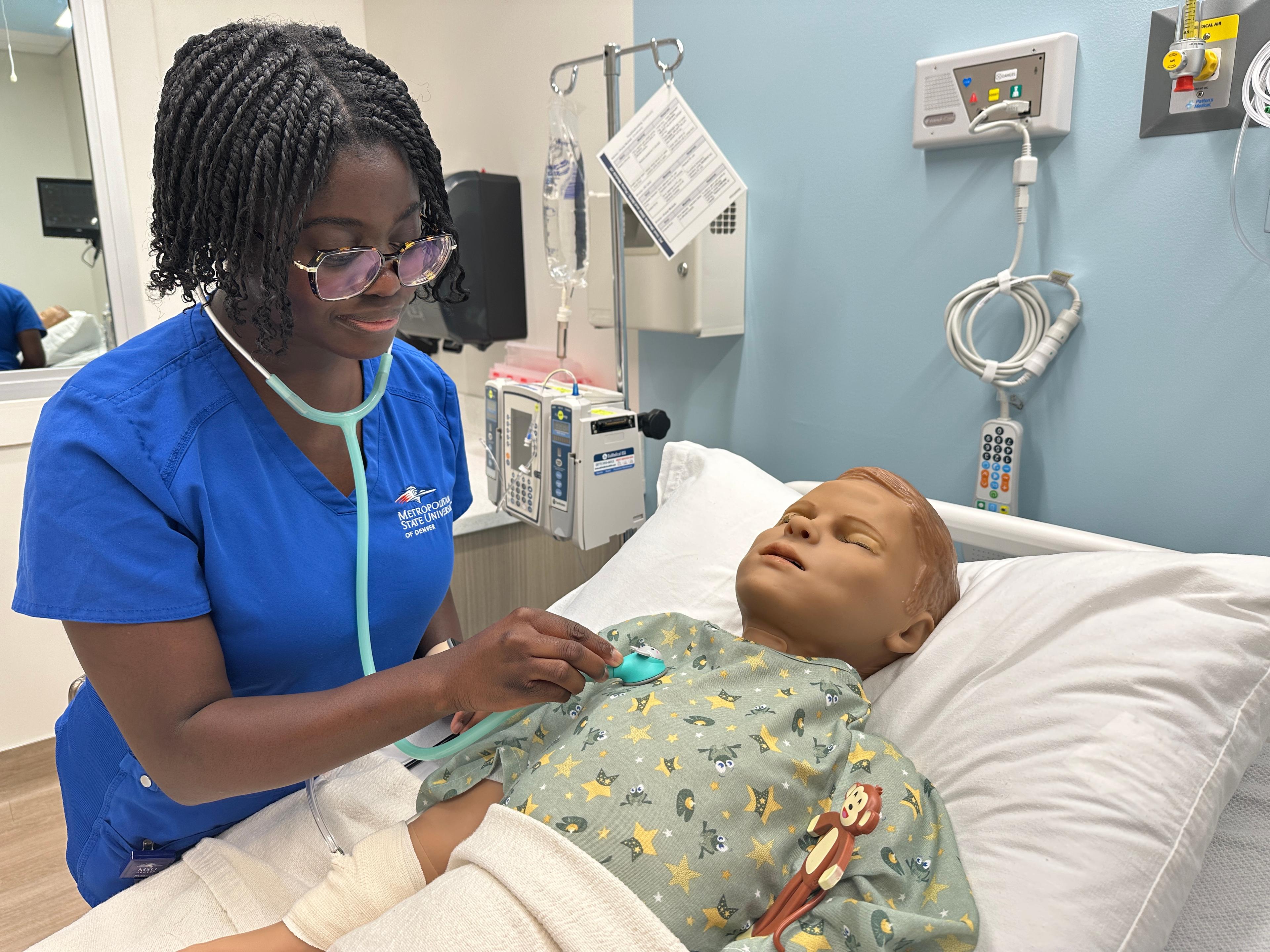
A pregnant woman lies on a hospital bed in Denver. But there’s something different about this patient — she’s a mannequin, actually.
And, surrounded by nurses and students, this mannequin is about to give birth.
“A computer pushes the baby out of this mom,” said Kelli Valdivieso, a veteran nurse and a coordinator at Metropolitan State University of Denver’s new Interprofessional Simulation and Skills Laboratory. The lab is a cutting-edge teaching and learning space for future health professionals.
Not only can the mannequin give birth to teach these students, but in fact, a computer technician outside the “birthing room” can even change its heart rate and breathing cadence. They can even make the baby mannequin cry tears. Students in the lab work with fake blood, fake urine and can push a fingernail on one of the many mannequins resting in these hospital beds to measure blood flow to the tissue.
MSU Denver officially opened the new 18,000-square-foot renovation Wednesday with the goals of growing enrollment in its program by one-third and helping Colorado fill a critical nursing gap, one of the largest in the nation.
By 2026, the state could be short more than 10,000 registered nurses and 54,000 other health positions.
“The opening of these facilities is not an end unto itself but rather an opening salvo in our quest to revolutionize health care in the state of Colorado,” said Hope Szypulski, dean of the College of Health and Human Sciences at MSU Denver.
The university also plans to open a six-story 70,000-square-foot tower in 2027 as part of the Gina and Frank Day Health Institute to boost the number of students in nursing, health, and social work programs. Right now, about half of qualified applicants must be turned away because the school simply doesn’t have the space to teach them all.
The first cohort of students is using the new simulation labs – and they really like them
Emmy Spence, a second-semester student, remembers the old simulation “labs” in MSU Denver’s Boulder Creek building just a stone’s throw away. They were classrooms surrounded by offices that teachers tried to turn into a hospital setting.
“That wasn't really possible because we still knew that we were in a classroom,” she said. “They did the best with what they were given.”
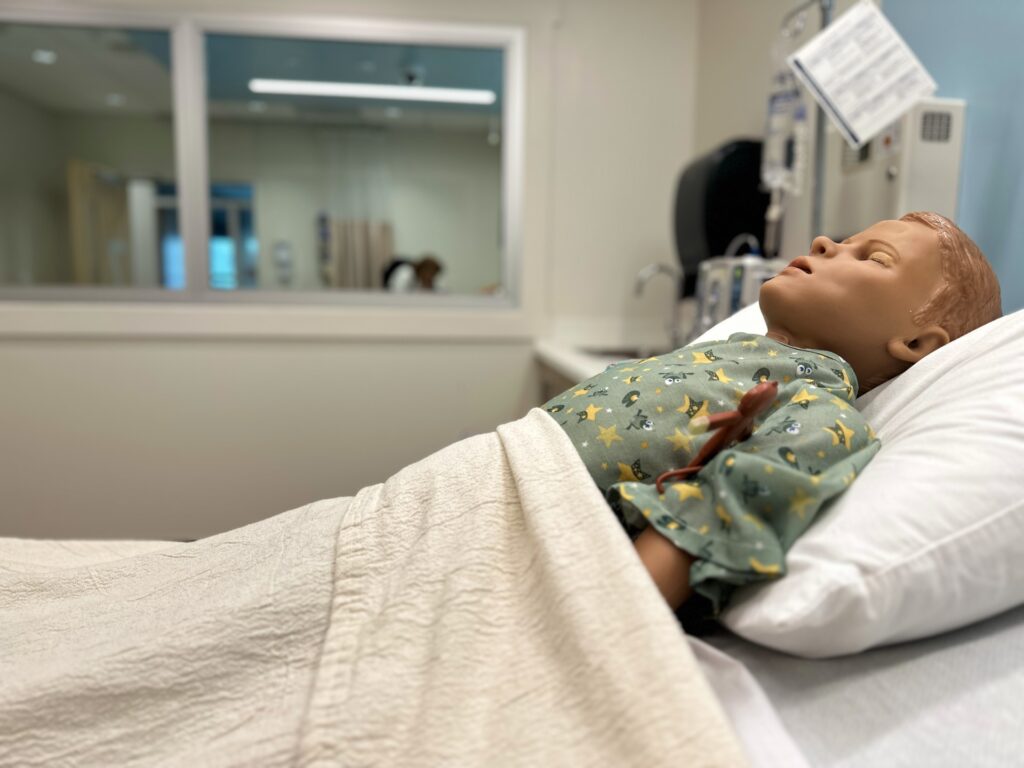
Spence says even little things like real privacy curtains and a separate medicine supply room in the new labs “help prepare you for the real world.”
“You have to practice like you're going to perform.”
In the old building, student nurses would draw medicines in a room that was surrounded by busy office spaces where people were having meetings. Not so in the new simulation labs.
“You need to be in a quiet, secluded place so that you can put all your attention to making sure that you're drawing up medication properly, that you're knowing it's the right patient at the right time, the right dose … you have to know all those things.”
Each student has very personal reasons for wanting to be a nurse
Research shows patients achieve better outcomes when receiving care from practitioners who share their background. MSU Denver’s program attracts a diverse student population, which helps in its mission to close health equity gaps.
Spence remembers the story her father, from a poor family in Ghana, told her about his twin brother who died prematurely because the family didn’t have enough money to pay for intensive care. Her mother, also Ghanaian, told her about how her grandmother took care of children in the community who needed help. Spence has dreams of being a pediatric nurse or working with a health care nonprofit — possibly in Ghana. The 21-year-old loves children.
“I work with them at a church right now and I just have such a heart for them. They're hilarious, (and) they're the most vulnerable among us.”
During her great-grandmother’s last few weeks of life in hospice, Evie Mercado helped care for her. Mercado said that changed her view of death.
“Seeing the hospice nurses come in and truly celebrate her life every day was super special.”
The nurses and family flipped through photo albums while her great-grandmother was able to share stories about her life. The experience gave Mercado a deeper, more complete understanding of life. Though she works in an oncology and neurology department now, she’d eventually like to be a hospice nurse.
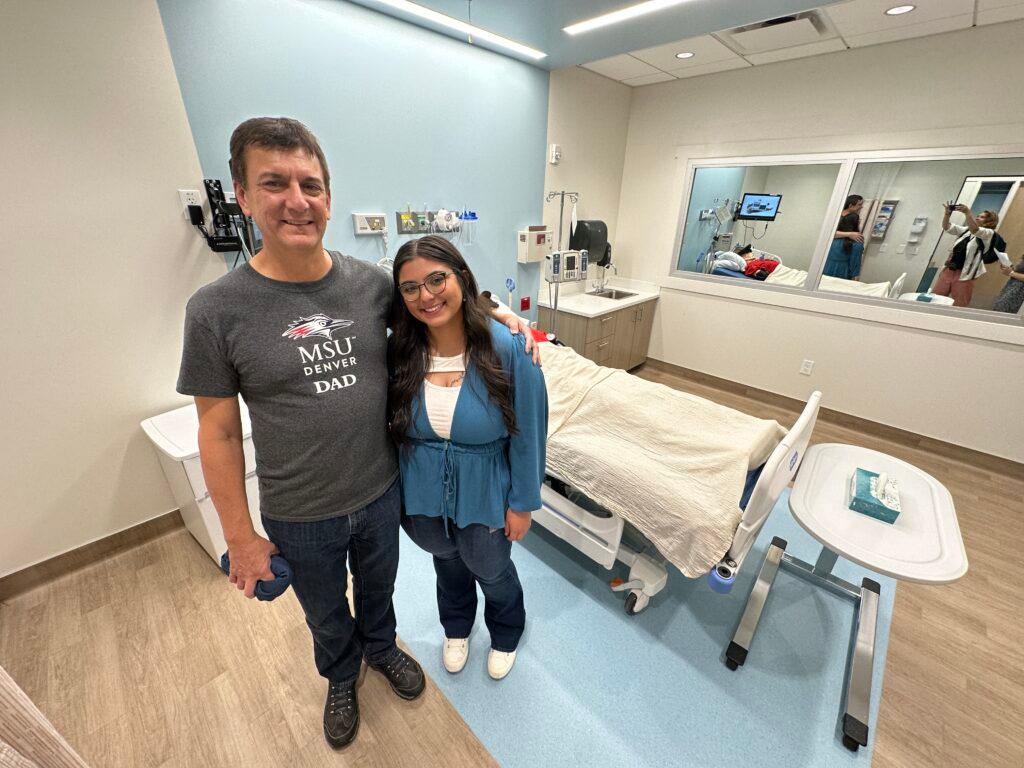
When Marisa Schreiner was 15, her father had heart problems. She didn’t understand what was going on.
“Just seeing how nurses treated him and me and my mom and my brother and made us feel comfortable and less stressed during a hard time was really incredible.”
She also had several younger cousins who faced challenges during the birthing process.
“I think just seeing the struggles of their moms and also how they grew up so fast and that everything ended up OK …. I just want to be part of that story for kids in the future.”
'The opportunity to learn from my mistakes'
Once students have mastered how to assess every part of the human body in the skills labs, they shift their focus to the simulation laboratory. Each student is assigned a role, and they’re presented with a scenario, a mannequin patient, and a chart. The team enters the patient’s room and gets to work.
Simulations as realistic as possible are key to high-quality training.
“Having a simulation gives me the opportunity to learn from my mistakes,” Mercado said. “Whereas in the real world, I would learn from my mistakes, but it could be at the cost of somebody's life.”
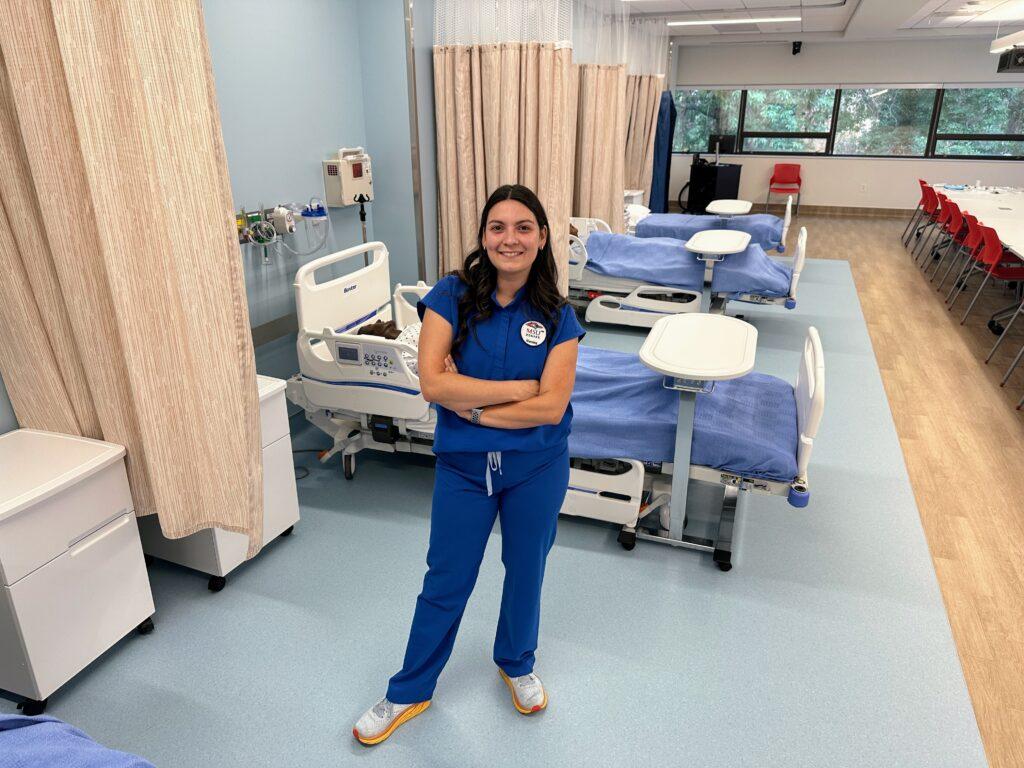
Instructors watch as students work on the mannequins. Some sessions are videotaped for later review in class.
“They'll let us know when we've made a big mistake and then they turn it into a learning moment,” she said.
Valdivieso said it can be intimidating for students with no experience to go into a live clinical setting with real patients. The simulation labs help.
“Sometimes the intimidating part or scary part for some of our students is just talking to strangers. That's something that's a really big barrier for them to overcome that we work on in simulation and then that translates to helping (in real situations).”
In a lecture class, students might learn about therapeutic communication. But in the simulation labs, “actors” act out various mental health conditions and students practice those communication skills.
“They come in the room and you just treat it with realism and professionalism just like you would any patient in a hospital,” said student Madison Lawrence.
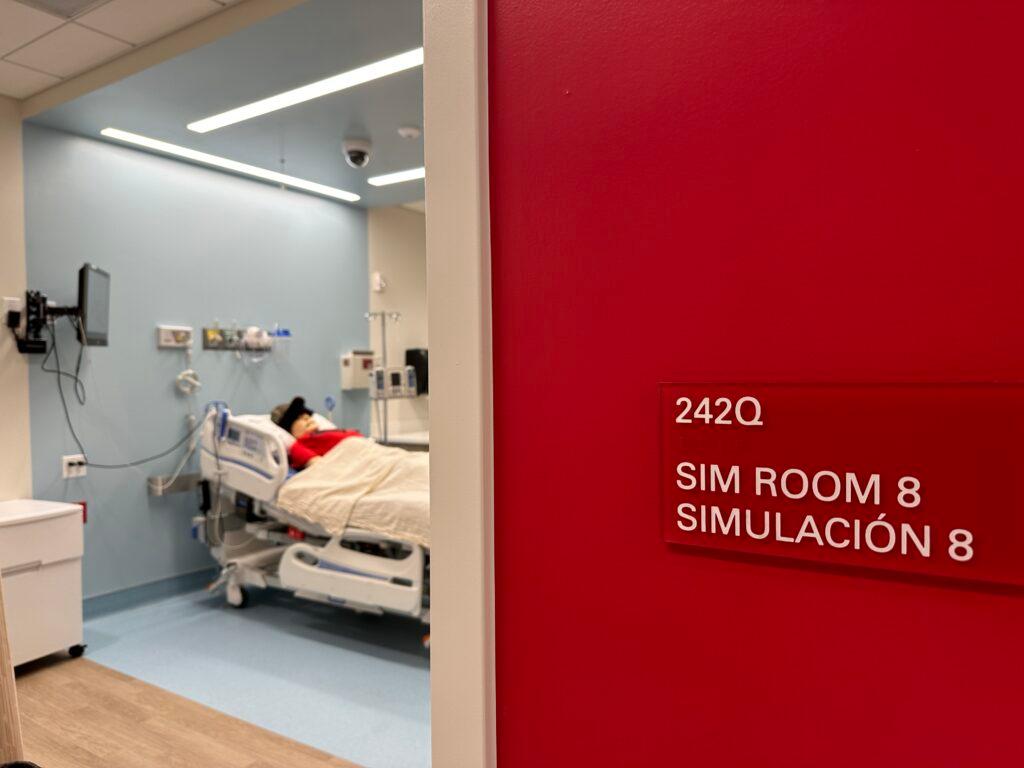
In one scenario, the actor, with classmates representing friends and family, entered the lab showing signs of depression, including withdrawing from the conversation.
“Your objective as the nurse was to try and get her to open up about recent stressors in her life to just evaluate and make goals with her to advance her care.”
Undoing silos in higher education
Alongside the simulation and skills labs, the new space has a home health care lab and an ambulance bay lab.
The university embraces what’s called interprofessional education when students and practitioners from different disciplines learn together. For example, students work with Denver Health’s EMT students to practice seamless patient hand-offs at the ambulance bay. In the home health care lab, social work students team up with nursing students on how bathing or eating might work in someone’s home.
“Our students will not be working in a vacuum, so why should they be studying in one?” said Szypulski. “This requires unlearning a lot of traditionally siloed legacy models of higher education.”




